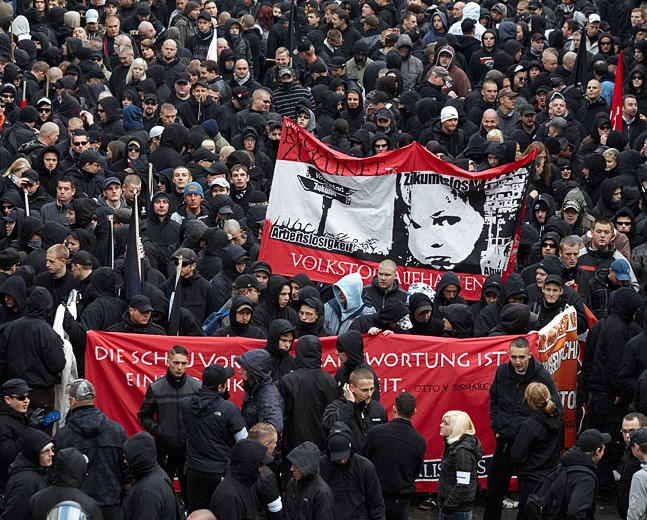The recent terrorist attack of Hamas against Israeli citizens offered new arguments to the far-right parties and groups in Europe. However, once more, the European far-right is divided before the events in the Middle East.
Part of the institutionalised far-right parties, such as the National Rally of Marine Le Pen or the League of Matteo Salvini, is ready to exploit the conflict in a xenophobic and Islamophobic direction. The extremist groups, on the other hand, find the opportunity to spread antisemitism and call their followers to act against the Jews. However, channels between extremists and “institutionalised” parties still exist, as several cases in Germany recently revealed. The Alternative for Germany (AfD) hosts white supremacists who have leading roles at a local level. At the same time, the federal security services accused a young group of the party of hosting extremist ideas.
The Counter Extremism Project (CEP) reported a tweet made by a verified account containing a video uploaded to Twitter/X on October 18, with antisemitic content receiving over 1.2 million views. The video praised Nazi Germany’s economic and monetary policies and Hitler for confronting German bankers. An accompanying tweet spread antisemitic conspiracy theories, encouraging the viewing of two antisemitic and pro-Hitler faux documentaries.
CEP reports weekly on the methods used by extremists to exploit the Internet and social media platforms to recruit followers and incite violence. CEP also localised a website hosting more than 100 gigabytes of far-right books promoting white supremacy, antisemitism, anti-LGBTQ sentiment, and Holocaust denial. It comprised instruction manuals to build explosives and other weapons as well.
On-line white supremacists praise Hamas’s attacks
White supremacist and neo-Nazi online communities on Telegram celebrated the recent Hamas attacks on Israel. They also accused Israel and Jewish organisations of potentially creating a refugee crisis in Europe.
In several EU countries, far-right policies based on xenophobia are on the table. The authoritarian government in Hungary, the ultraconservative government in Poland as well as the various far-right parties created a political environment in Europe that favours Islamophobic and racist rhetorics.
Extremist Telegram channels post messages and photos, including AI-generated art, and praise violence against Israelis. CEP reports a Telegram channel with almost 2,000 followers that supports Atomwaffen Division successor groups shared photos of Israeli casualties and celebrated violence against Jews.
Far-right propaganda has found a new argument – Israeli military operations in Gaza would increase refugee numbers seeking to arrive in the EU. In a ridiculous movement, the newly appointed Slovak Prime Minister has mobilised troops to the borders with Hungary to “defend his country” from a refugee invasion.
A security threat in Europe
However, a real risk from terrorist groups in Europe still exists. Law enforcement and security agencies are on high alert, fearing potential terrorist attacks.
German authorities arrested on October 25 a former ISIS member as a suspect of terrorist acts. Three days before, the online pro-al-Qaeda group Jaysh al-Malahem claimed responsibility for bomb threats against French airports and Jewish institutions in Europe.
Neo-Nazism on the rise in Germany
The rise of the far-right Alternative for Germany (AfD) is associated with the re-emergence of neo-Nazi groups and tendencies inside or outside the party.
On October 30, German authorities arrested an AfD legislator on charges including displaying forbidden totalitarian symbols. Previously, on September 19, the German government banned the neo-Nazi group Hammerskins Germany, a group that propagates racism based on Nazi ideology. Law enforcement officers raided the homes of several members of the group.

